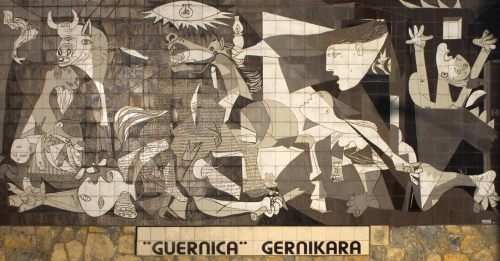Guernica

On 26 April 1937, eighty-five years ago, the Basque town of Gernika was devastated by German Nazi bombers. This event gave impetus to Pablo Picasso's painting Guernica. The painting has become one of the most famous artistic anti-war statements of all time.
Gernika, Leningrad, Hiroshima, My Lai - places that associate horrendous war crimes - have come to symbolise the horrors of war, endured by many peoples. They stand out in our collective memory as grave warnings to do our outmost to oppose war. Yet time and again, governments manage to manipulate their populace into believing that they ought to support the latest war efforts, mostly by fake news and outright lies. Voices against war are silenced.
As Rosa Luxemburg stated, following her arrest for speaking at an anti-war rally in Berlin in 1913, in her defence in the courtroom:
"When the majority of working people realise ... that wars are barbaric, deeply immoral, reactionary, and anti-people, then wars will have become impossible."
Culture Matters published an article on Picasso's painting five years ago, on the eightieth anniversary of the slaughter. It can be accessed HERE.

Jenny Farrell
Jenny Farrell is a lecturer, writer and an Associate Editor of Culture Matters.
Latest from Jenny Farrell
- Poetry for the Many, an anthology by Jeremy Corbyn and Len McCluskey
- A hopeful vision of human renewal: the theatre of Seán O'Casey
- Art that's rooted in the upheavals of his time: Caspar David Friedrich, 1774-1840
- A Drive to Change the World: James Baldwin, Black Author, Socialist and Activist
- A woman's perspective on the invisible front: A review of 'The Shadow in the Shadow'
